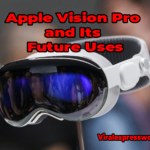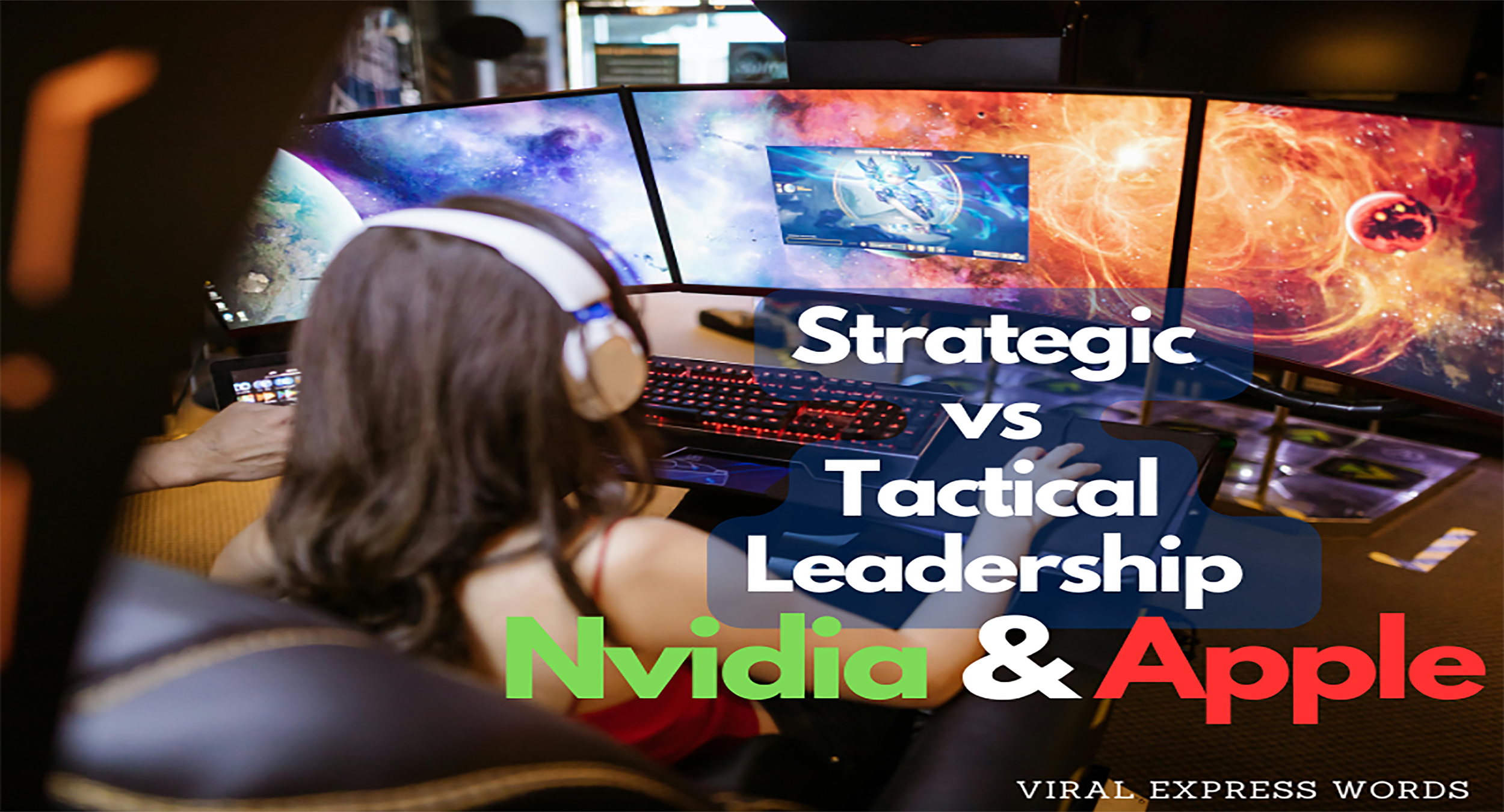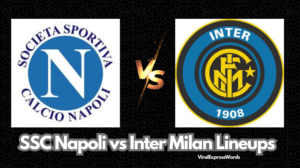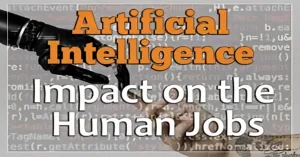![]()
Nvidia Apple Inc Insights into Tactical vs. Strategic Management
Nvidia and Apple: Apple has ended its electric car initiative as Nvidia’s valuation continues to rise, potentially surpassing Apple’s. Both companies are near the top in financial performance. While both companies saw the opportunity for autonomous self-driving electric vehicles, Apple’s late attempt to pivot to AI failed. This is expected to fail as tactical companies often struggle to compete on strategic initiatives due to entering too late. Both tactical and strategic management can be successful but require different approaches. Lenovo’s prototype laptop with a clear screen caught my interest at the Mobile World Congress.
Nvidia and Apple: Nvidia Corporation on AI and Self-Driving Electric Cars
Apple Inc, Nvidia Inc: Balancing Risk and Reward in Innovation
Tactical vs. Strategic Approaches: Apple Corporation
Apple’s strategic approach was reactive and tactical, resulting in a lack of competitiveness. Despite investing millions in this endeavor, the company’s results were not competitive. Tactical approaches often require outspending existing competition, which can be costly and even more expensive when expenses spike. However, reducing the risks of making mistakes is possible as others have already paved the way. The strategic player risks choosing the wrong path or getting caught before achieving results, while the tactical player risks following the wrong leader or hesitating to invest.
Microsoft Xbox, Zune, Phone
Microsoft’s Xbox effort showcased how to do tactical right. It was concerned that Sony might use its PlayStation platform to displace Windows PCs with appliances and moved to block that effort with Xbox.
Steve Ballmer managed the move, sparing no expense to ensure success. After massively outspending a typical strategic effort like Nvidia’s in a brief period, he created a successful alternative to Sony’s offering, which continues today despite receiving far less support.
Subsequently, when it came to Zune and the Windows Phone, also managed by Ballmer, Microsoft seemed to throw out its successful Xbox plan and underfunded the Zune and phone efforts. That failed badly because Ballmer was unwilling to spend what was needed to be successful.
Microsoft squandered billions (acquiring most of Nokia), but ultimately wasted that expenditure, highlighting that reluctance to invest adequately for success leads only to financial loss in a market; hence, abstaining from it is the wisest course of action.
Sunk Cost and Timing
Tesla Strategic Thinking
Tesla’s success in electric vehicles can be attributed to strategic thinking and the development of a large public charging ecosystem. The company recognized the need for charging locations outside homes for EVs to be successful. This strategic approach allowed Tesla to outpace other struggling electric car companies by operating tactically and under-investing. If other companies had not yet adopted electric cars, they would be in better financial position. Tesla’s success is not due to the lack of electric cars, but rather the need to out-invest in the leader to stay ahead.
Strategies of Market Leaders: Lessons from Tesla and Microsoft’s Xbox Example
When you’re a market leader like Tesla, competitors are compelled to invest more resources and act swiftly to keep pace. This dynamic doesn’t imply relaxation on the part of the leader, but it does mean that competitors, as demonstrated by Microsoft in the Xbox example, must outspend to bridge the gap. If you’re unwilling to commit to such efforts, it may be wiser to explore alternative markets rather than squandering resources in a futile attempt to catch up with a better-funded frontrunner.
Wrapping Up
Nvidia CEO Jensen Huang anticipated the coming of AI, robotics, and electric autonomous car markets. Over decades, he positioned Nvidia Apple to lead in these segments.
IBM made similar, though not as successful, efforts with Watson and now Watson. Other examples of successful strategic thinking include Tesla, which entered a market (electric cars) that was mostly dead and then ended up owning the market — much like Apple did with the iPod and iPhone — because no one else wanted to take the chance or invest enough to compete with Tesla. Tim Cook wisely left the autonomous electric car market because he was unwilling to invest to succeed. However, his risk is making that same mistake with AI, where the investment requirement will be much higher. I often worry that CEOs not only refuse to learn from each other’s successes and failures but also refuse to learn from their own, leading to future failures. The three recurring mistakes are:
1.Failing to assess the necessary costs for success accurately,
2.Treating requirements as options that can be avoided, or not knowing the requirements in the first place, and
3.Treating sunk costs as an asset that can be preserved.
Right now, Nvidia’s Jensen Huang is the gold standard for CEOs. We could all learn a lot, not only from him but especially from other CEOs.
Lenovo Think Book Transparent Display Laptop
Lenovo has been thinking out of the box of late. Its latest experimental offering, the Think Book Transparent Display Laptop was showcased at Mobile World Congress this week. The focus is more on the display than the laptop itself, which is a prototype and will change before shipping. In addition, the prototype lacked the security and productivity feature that would disable the transparency on command.

Think Book Transparent Display Laptop proof of concept (Image Credit: Lenovo)
I’ve been fascinated by transparent screens ever since I saw the movie “Minority Report.” These screens would provide benefits for those who don’t want their vision blocked by a monitor or a screen. The Dell 49-inch monitor in the office covers the entire window view, making it annoying to stand up to look out during the day. This can be problematic for receptionists, sales representatives, and teachers who need to show presentations, read slides, or check if students are working on assignments or doing unapproved tasks on their laptops.
| For more information: Nvidia, Apple, and Strategic vs. Tactical Leadership (technewsworld.com) |
Lenovo Think Book Transparent Display Laptop: A Game Changer in Screen Transparency
The Lenovo Think Book Transparent Display Laptop is a revolutionary technology that could revolutionize screen viewing and content sharing. It allows users to see through the screen, especially on large monitors, a game changer for those who want to see what the screen is blocking. If Lenovo can successfully fund and target the right audience, this technology could be a strategic success.
Conclusion
The article compares Apple’s exit from the electric car venture and Nvidia’s soaring valuation, highlighting the differences between tactical and strategic management. Apple faced setbacks due to reactive investment, while Nvidia’s long-term strategic approach yielded significant rewards. The article highlights the importance of strategic foresight and innovation, comparing Microsoft’s Xbox success and Apple’s missed opportunities in AI. The article emphasizes the need for CEOs to learn from both successes and failures and highlights the potential of strategic success in evolving technologies.
FAQ’s
1. Why did Apple abandon its electric car venture?
Apple decided to discontinue its electric car effort due to being significantly behind in the market and facing increasing risks of failure. The company realized that the investment required to catch up was too high, especially considering the slowing demand for electric cars.
2. How does Nvidia’s valuation compare to Apple’s?
Nvidia’s valuation is rapidly increasing to the point where it may soon surpass Apple’s. Nvidia Apple companies are currently near the top in terms of financial performance.
3. What distinguishes tactical from strategic management?
Tactical management involves reactive and short-term approaches, often requiring outspending existing competition. Conversely, key administration entails long-term planning, massive speculation, and a willingness to accept large risks in exchange for potential profits.
4. What examples illustrate tactical and strategic approaches?
Microsoft’s Xbox Drive showcases effective strategic management, while Nvidia showcases critical thinking. Apple’s prolonged interest in artificial intelligence and self-driving cars demonstrates the challenges of strategic approach in a competitive sector.
5. Why is sunk cost an important concept in decision-making?
Since they have already occurred, sunk costs represent expenses that cannot be avoided. Gaining a grasp of this concept is essential to making just judgments because it prevents decisions made in the past from affecting the present.
6. What are the risks associated with tactical management?
Tactical techniques may lead to underinvestment or misallocation of resources, which makes it challenging to successfully compete in strategic efforts. Businesses using a strategic approach may struggle to identify industry leaders or set themselves apart from competitors.
7. How did Tesla demonstrate strategic thinking in the electric car market?
Nvidia Apple Building an extensive infrastructure for charging was part of Tesla’s strategic plan, in addition to creating electric cars. This insight allowed Tesla to acquire a major edge over competitors that undervalued the importance of charging infrastructure.

























Add Comment